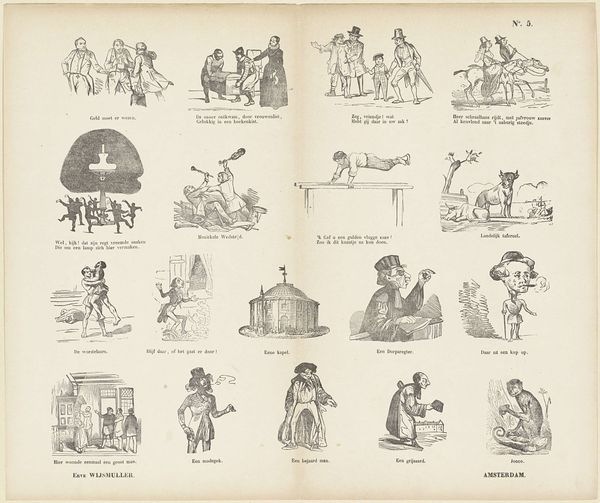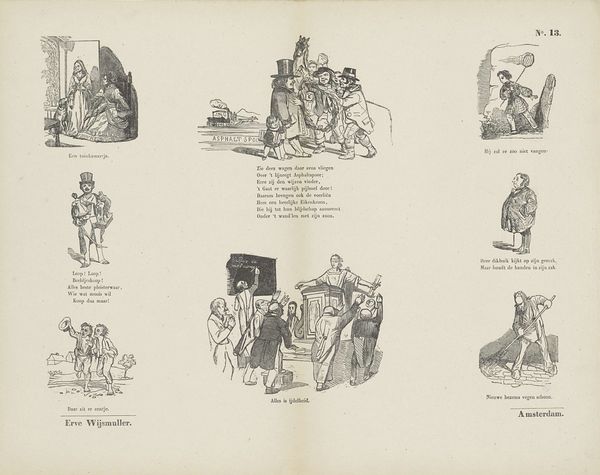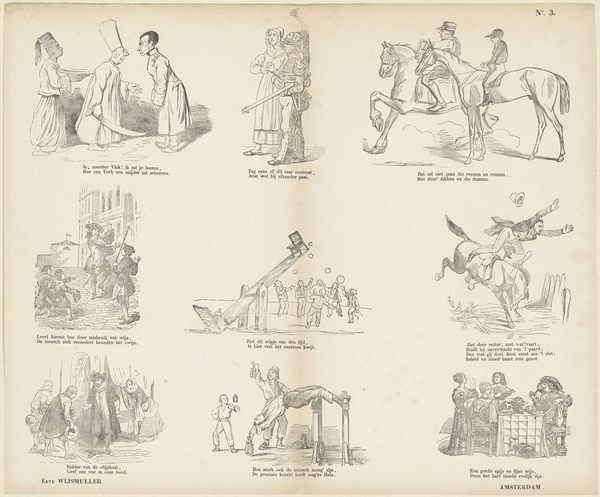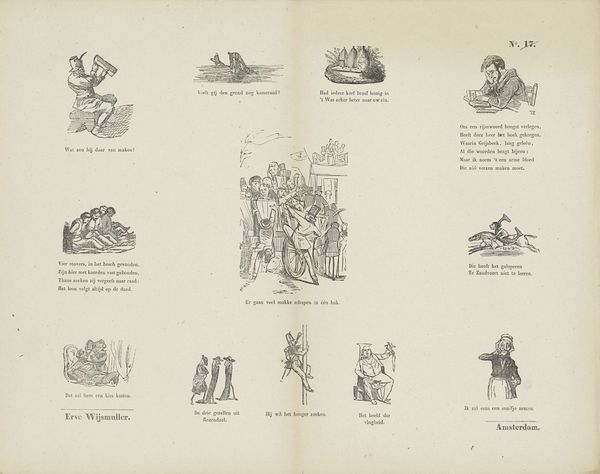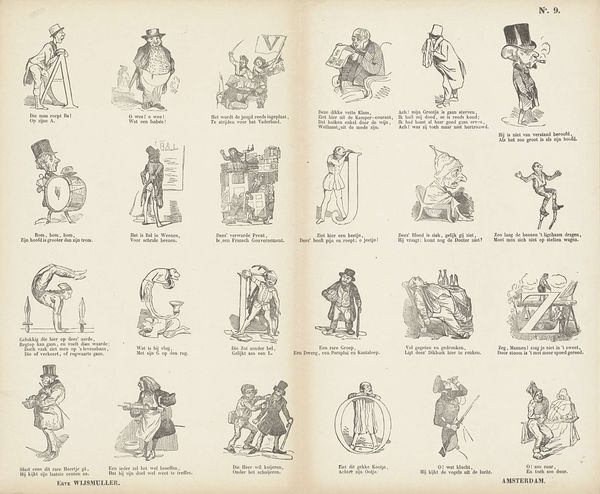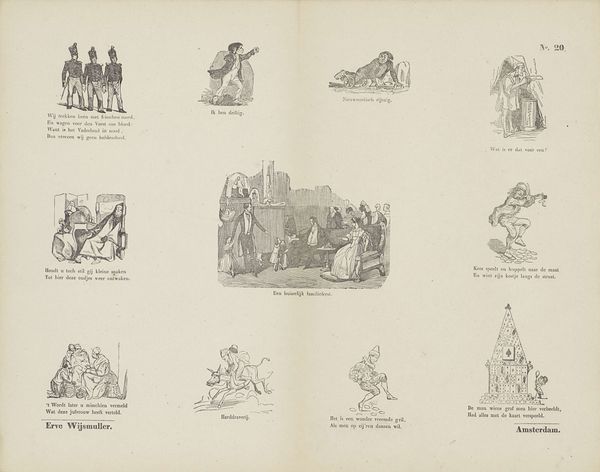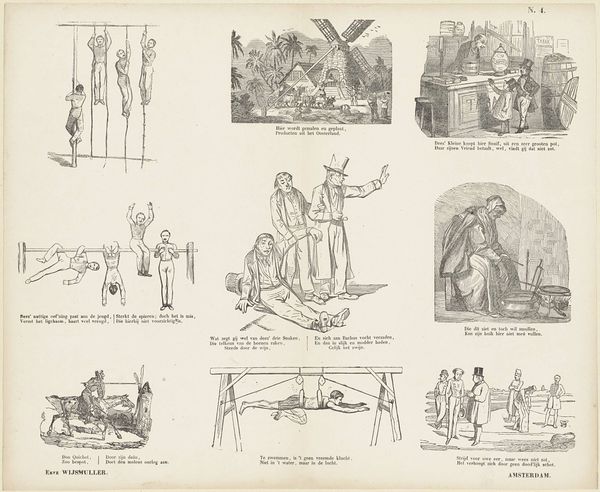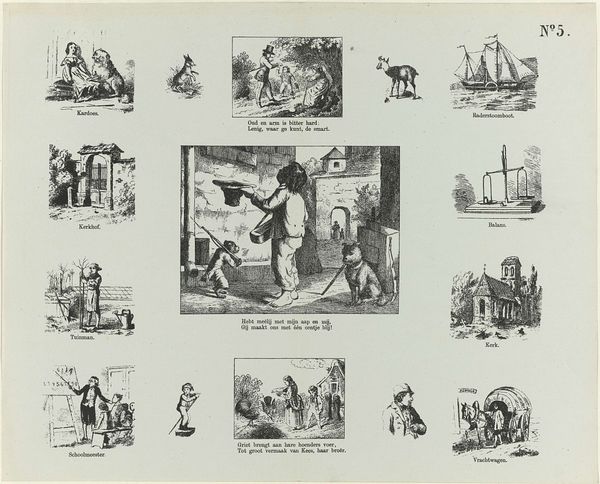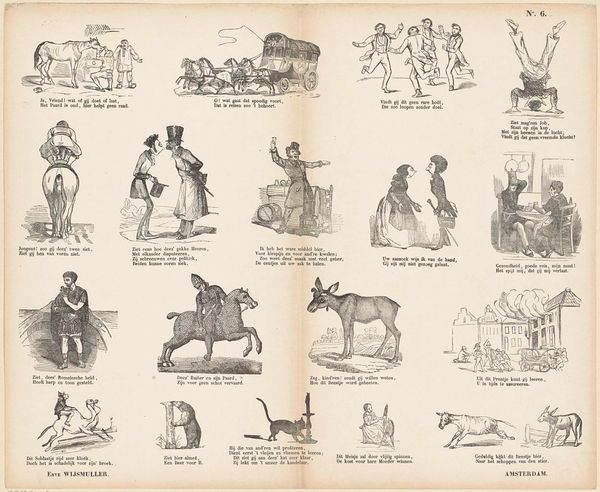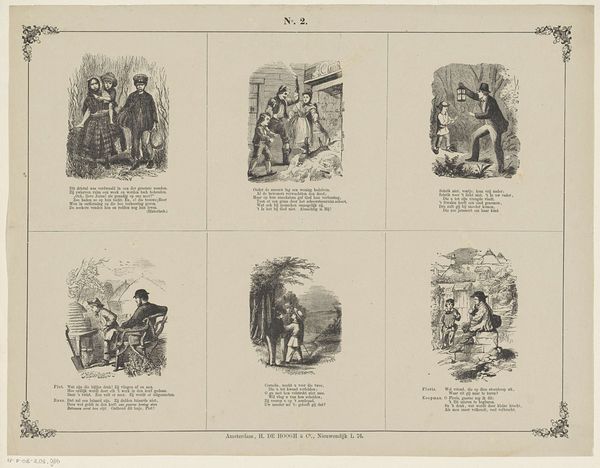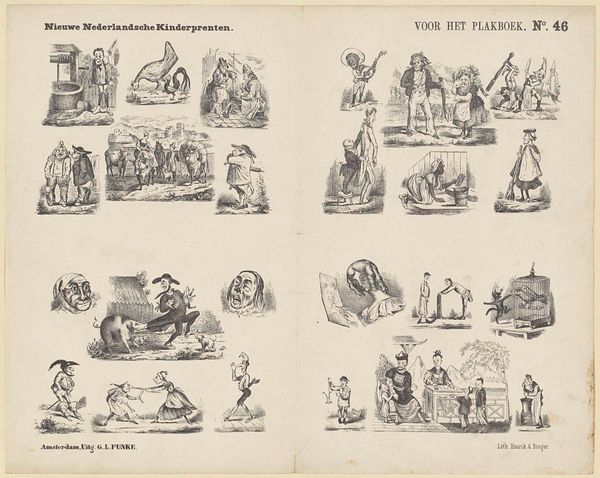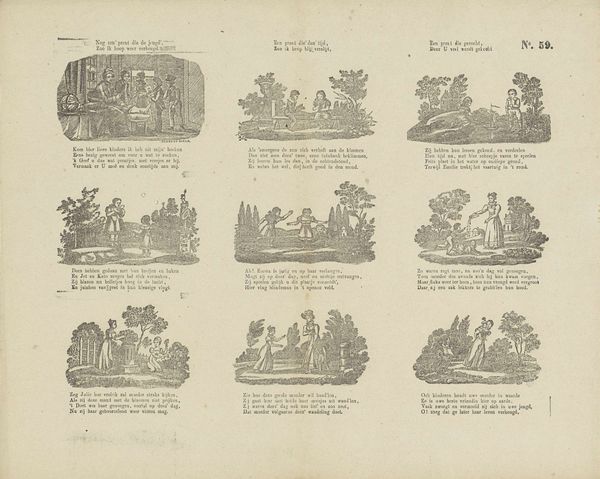
drawing, print, ink, engraving
#
drawing
#
narrative-art
# print
#
caricature
#
ink
#
genre-painting
#
engraving
Dimensions: height 334 mm, width 400 mm
Copyright: Rijks Museum: Open Domain
Curator: We’re looking at "Verschillende voorstellingen," or "Different Presentations," a print created by Erve Wijsmuller sometime between 1828 and 1913. It’s currently part of the Rijksmuseum's collection. The work combines engraving and ink drawing. Editor: It feels like a glimpse into a 19th-century comic strip, but without the speech bubbles. There’s a playful, almost absurd quality to many of the vignettes. Curator: These aren't quite comics, but I understand the impression. This work pulls from the genre painting tradition, but adds a touch of caricature, making it more satirical. Consider how each small scene portrays a brief, humorous story about everyday life. Editor: I'm especially drawn to the figure being hoisted up to the tree – is it an offering? Punishment? The imagery reminds me of folk tales, but the engraving gives it this formal feel. Curator: Perhaps folk tales are relevant here. There were distinct ways of depicting cultural attitudes through accessible, inexpensive prints like these. They reveal certain attitudes and perhaps social criticisms common during that era, especially among the literate middle class. Editor: Do you think some of the symbolic nature has been lost through time? For example, the man warming himself – is that about charity, or perhaps about societal imbalances? It all feels coded. Curator: Undeniably so. Visual culture changes with time, what may have been explicit then requires context today. In that sense, these seemingly lighthearted sketches hold deeper sociological clues to 19th century life. The print serves as a document reflecting its social values and expectations. Editor: Seeing these everyday scenes turned into almost dreamlike snippets—I wonder, what would Wijsmuller think of us interpreting it now? Curator: It's through such modern interpretation that pieces such as these maintain their vibrancy and contribute meaningfully to historical discourse, centuries later.
Comments
No comments
Be the first to comment and join the conversation on the ultimate creative platform.
